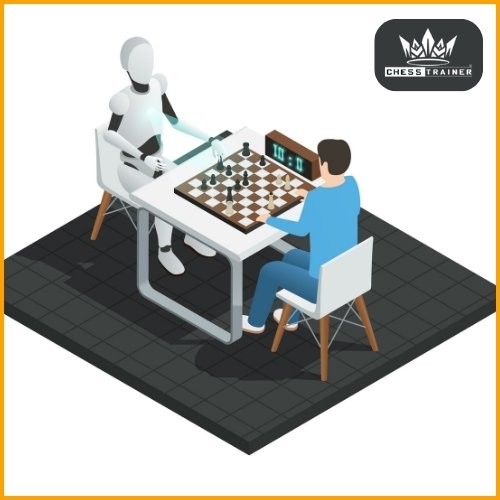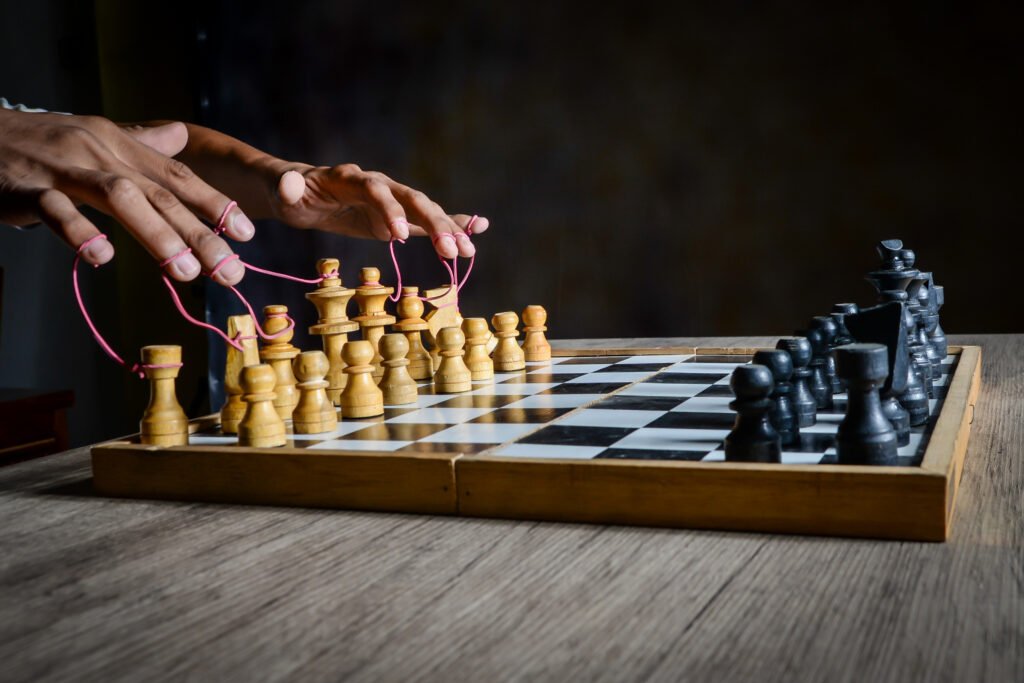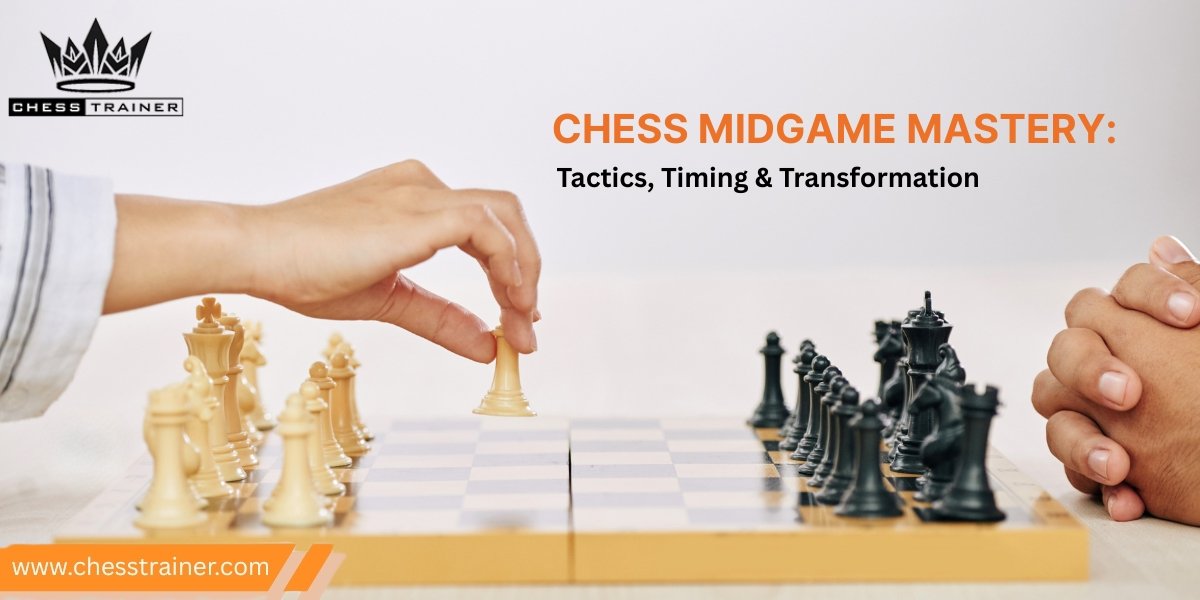Chess Midgame Mastery: Tactics, Timing & Transformation
The midgame is often called the most complex and decisive phase in chess. After a carefully executed opening, where players establish development and control of the center, the midgame is where plans are executed, positions transform, and tactical battles are fought. Achieving Chess Midgame Mastery is not just about knowing patterns or memorizing moves; it’s about understanding the principles of positional play, honing decision-making, and recognizing the perfect moment to apply tactics, all while preparing for the crucial transition into the endgame.
At Chess Trainer, we focus on helping players unlock this crucial phase of the game. In this blog, you will explore how to sharpen your Chess Midgame Strategies, understand Midgame Tactics in Chess, master Chess Timing Techniques, and skillfully execute the art of Transforming Midgame to Endgame.
The Critical Role of Chess Midgame Mastery
The Chess Midgame Mastery requires a deep balance between strategic planning and tactical alertness. While the opening offers a structured sequence of moves based on theory, the midgame is far less predictable and demands an acute understanding of evolving positions. Players who fail to transition from opening principles into purposeful midgame play often drift into passive positions or tactical traps.
Why Midgame Matters More Than You Think
A common mistake among beginners is underestimating the midgame’s complexity. They may focus solely on immediate threats, missing strategic goals like controlling key squares, creating pawn structures, or improving piece coordination. The ability to implement effective Chess Midgame Strategies helps players impose long-term pressure, while Midgame Tactics in Chess allow seizing immediate opportunities.
Deep Dive into Chess Midgame Strategies

Chess Midgame Strategies serve as the backbone of midgame play. These strategies require careful planning and should be flexible enough to adapt to the opponent’s moves. Some of the most essential strategies include:
- Central Control – Dominating the central squares (e4, d4, e5, d5) enables your pieces to have maximum mobility. Effective central control ensures both defensive and offensive options.
- Piece Activity – Unlike the opening, where the goal is to develop pieces, in the midgame the key is to ensure they are active and participate in the plan.
- Pawn Structure Awareness – Pawns are the soul of chess strategy. A strong pawn structure can restrict your opponent’s pieces and create long-term advantages.
- King Safety – Even in the midgame, safeguarding your king remains paramount. Attacks can arise suddenly, and a weak king position often leads to losing games.
By focusing on these fundamental strategies repeatedly, you steadily build towards Chess Midgame Mastery.
Mastering Midgame Tactics in Chess
While strategy concerns long-term goals, Midgame Tactics in Chess are short-term operations that can dramatically shift the balance. These include:
- Forks – A single piece attacking multiple enemy pieces. Knights are especially effective in midgame forks.
- Pins – Immobilizing an enemy piece because moving it would expose a more valuable piece.
- Skewers – The opposite of a pin; attacking a valuable piece, forcing it to move, thus exposing a lesser piece behind it.
- Discovered Attacks – Moving one piece to reveal an attack from another, often leading to significant material gain.
Tactical awareness grows with deliberate practice. Solving tactical puzzles daily helps reinforce the recognition of Chess Tactical Patterns, making them instinctive during actual gameplay.
Chess Timing Techniques: Knowing When to Act
An often overlooked but critical aspect of Chess Midgame Mastery is the ability to manage time effectively using Chess Timing Techniques. Time pressure is a real opponent in itself.
Key timing techniques include:
- Pace Your Thinking – Avoid spending too much time on obvious moves. Instead, allocate time to complex positions.
- Critical Moments – Learn to recognize when a move could decisively change the game, such as an unexpected tactical opportunity or a positional breakthrough.
- Increment Strategy – In rapid or blitz games, knowing how to manage increment time allows for maintaining steady progress without unnecessary haste.
With practice, players develop an innate sense of when to accelerate or slow down their decision-making, a hallmark of Chess Midgame Mastery.
Transforming Midgame to Endgame
A major component of Chess Midgame Mastery is understanding how to effectively execute the Transforming Midgame to Endgame transition. The midgame should ideally lead into an endgame where you hold the advantage.
Key techniques include:
- Simplification – Trading off pieces when ahead in material can lead to an easier endgame.
- Pawn Structure Transition – Use pawn advances or breaks to open files and create passed pawns.
- King Activity – In the midgame, the king is usually hidden; in the endgame, activating the king is critical.
One strategic insight for transforming from midgame to endgame is to identify weaknesses in your opponent’s position and exploit them, leading to a favorable simplification.
Practical Steps to Improve Chess Midgame Play
Improving Chess Midgame Play requires both theoretical study and practical application. Here are actionable steps:
- Study Grandmaster Games – Focus on how top players execute midgame plans, apply Midgame Positional Play, and make Midgame Decision Making with precision.
- Practice Tactical Puzzles – Enhance your ability to spot tactical opportunities and recognize Chess Tactical Patterns.
- Analyze Personal Games – Post-game analysis highlights weaknesses in your decision-making and provides improvement pathways.
- Understand Pawn Structures – Learn different pawn formations such as isolated pawns, hanging pawns, and pawn chains, and their strategic implications.
By following these steps, players gradually develop a deeper understanding of Chess Midgame Mastery.
Midgame Positional Play: The Strategic Core
While tactics can win material, Midgame Positional Play wins games in the long run. It involves:
- Outpost Control – Placing a piece, often a knight, on a square where it cannot be attacked by pawns.
- Space Advantage – Dominating more squares on the board to restrict your opponent’s pieces.
- Weakness Exploitation – Targeting backward pawns or weak squares in the opponent’s structure.
Regular practice in positional play enhances strategic depth, enabling players to gain sustained positional advantages and improve overall Chess Midgame Mastery.
The Art of Midgame Decision Making
Every move in the midgame should be purposeful. Midgame Decision Making involves analyzing the position holistically:
- Assess your own strengths and weaknesses.
- Identify opponent’s threats and weaknesses.
- Evaluate tactical possibilities.
- Formulate short-term and long-term plans.
A clear plan prevents random moves and reduces blunders. Strong decision-making directly contributes to effective Strategic Midgame Planning, increasing the likelihood of a successful game.
Strategic Midgame Planning: Developing a Roadmap

Strategic Midgame Planning is not about having a fixed formula, but about adapting principles to the current position.
Typical strategic plans include:
- Attacking the King – Combining piece activity, pawn storms, and tactical sacrifices to break the opponent’s defenses.
- Minor Piece Dominance – Outmaneuvering the opponent by placing your minor pieces (knights and bishops) in superior positions.
- Controlling Open Files – Using rooks to dominate open files and restrict enemy movement.
Effective planning requires both intuition and calculation. As players sharpen their Chess Midgame Mastery, they learn to balance these elements seamlessly.
Chess Transformation Ideas: Adaptability in Action
No two midgames are the same. One of the hallmarks of Chess Midgame Mastery is adaptability through Chess Transformation Ideas.
For example:
- Switching from a tactical struggle to a strategic positional battle.
- Sacrificing material for long-term positional gain.
- Trading off pieces to enter a favorable endgame.
The ability to transform the game based on your strengths and the opponent’s weaknesses makes the difference between a good player and a master.
Conclusion: Pathway to Mastery
Achieving Chess Midgame Mastery is not instantaneous. It requires deliberate study, disciplined practice, and continuous learning. By focusing on Chess Midgame Strategies, improving Midgame Positional Play, mastering Midgame Timing Techniques, and understanding the art of Transforming Midgame to Endgame, players elevate their performance.
To further develop your skills, explore professional coaching and structured programs at Chess Trainer, FIDE Instructor Dhanesh Shrikhande, with 30+ years of teaching experience. and Expert guidance by , tactical exercises, and strategic planning frameworks, you’ll be well on your way to mastering the midgame.
Remember, every great game is won or lost in the midgame. Make yours count.
Also Read: Is Online Coaching by a FIDE Trainer Worth It?
👉 Follow Us on Social Media! Stay Connected & Stay Ahead! 👇

